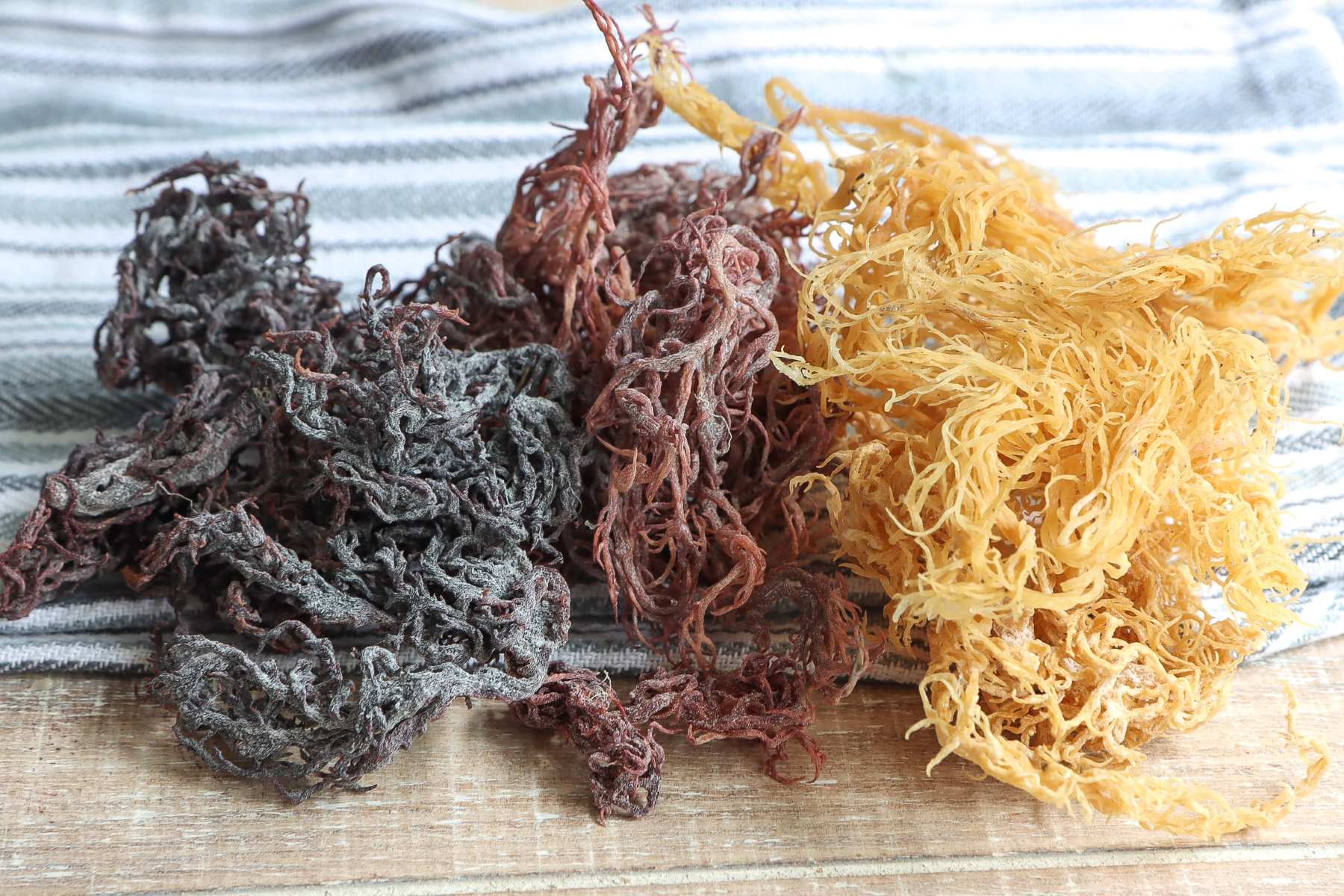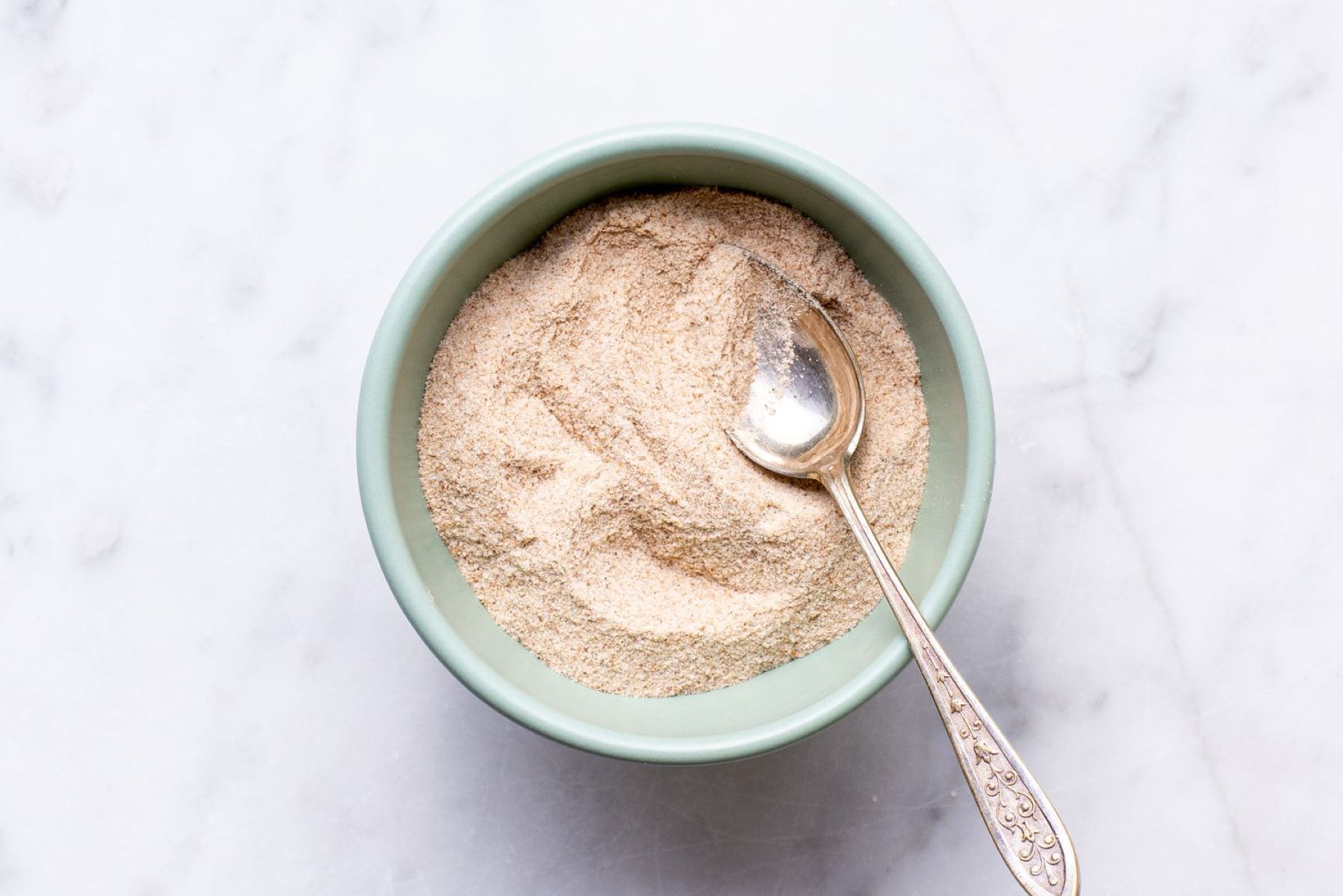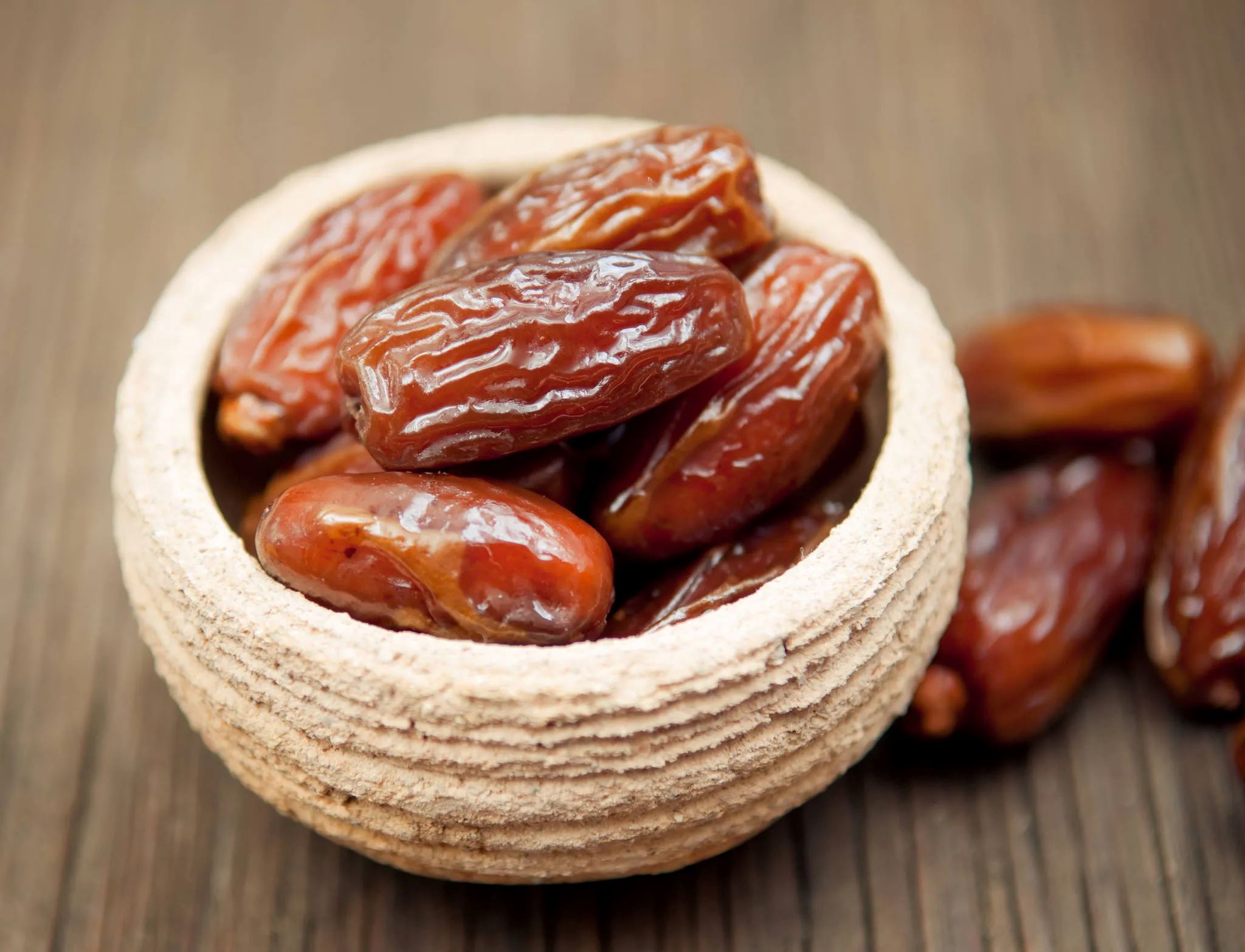Home>Food and Cooking>The Ultimate Guide To Drying Sea Moss


Food and Cooking
The Ultimate Guide To Drying Sea Moss
Published: January 15, 2024
Discover the best methods for drying sea moss in our comprehensive guide. From sun-drying to using a dehydrator, learn how to preserve this nutritious sea vegetable for your food and cooking needs.
(Many of the links in this article redirect to a specific reviewed product. Your purchase of these products through affiliate links helps to generate commission for Regretless.com, at no extra cost. Learn more)
Table of Contents
Introduction
Sea moss, also known as Irish moss, is a type of seaweed that has gained popularity in recent years due to its numerous health benefits and versatility in culinary applications. This nutrient-dense marine plant has been used for centuries in various cultures for its medicinal properties and as a natural thickening agent in foods.
As the demand for natural and plant-based remedies continues to rise, sea moss has emerged as a superfood with a wide range of potential health benefits. From boosting immunity to promoting digestive health, sea moss has become a sought-after ingredient in smoothies, soups, and even skincare products.
In this comprehensive guide, we will delve into the world of sea moss, exploring its origins, benefits, harvesting methods, and the essential process of drying sea moss. Whether you are a health enthusiast, a culinary connoisseur, or simply curious about incorporating this marine wonder into your lifestyle, this guide will equip you with the knowledge and techniques to harness the full potential of sea moss.
Join us on this journey as we uncover the secrets of sea moss, from its humble beginnings in the depths of the ocean to its transformation into a valuable ingredient that offers a myriad of health and wellness benefits. Let's explore the fascinating world of sea moss and discover how this remarkable marine plant can enrich our lives in more ways than one.
Read more: Top Sea Moss Brands You Need To Try
What is Sea Moss?
Sea moss, scientifically known as Chondrus crispus, is a species of red algae that grows abundantly along the rocky Atlantic coasts of North America and Europe. This marine wonder, also referred to as Irish moss, possesses a rich history dating back centuries, where it has been cherished for its potent blend of essential nutrients and therapeutic properties.
At first glance, sea moss appears as a vibrant, translucent seaweed with a unique texture that sets it apart from other marine plants. Its distinctive appearance and remarkable resilience in harsh coastal environments have made it a valuable resource for various cultures throughout history.
From a nutritional standpoint, sea moss is a powerhouse of essential vitamins, minerals, and trace elements. It is particularly renowned for its high content of iodine, a crucial nutrient for thyroid function and overall metabolic health. Additionally, sea moss contains a spectrum of vital nutrients, including potassium, calcium, magnesium, and vitamins A, E, and K, making it a valuable dietary supplement with a wide array of potential health benefits.
Beyond its nutritional profile, sea moss is revered for its natural gelling properties, which have earned it a reputation as a versatile thickening agent in culinary applications. This unique characteristic has made sea moss a popular ingredient in vegan and plant-based recipes, where it can be used to create creamy textures in soups, smoothies, and desserts without the need for artificial thickeners or stabilizers.
In traditional medicine, sea moss has been utilized for its potential to support respiratory health, soothe digestive discomfort, and promote overall well-being. Its mucilaginous nature lends itself to soothing irritated mucous membranes, making it a natural remedy for respiratory conditions and gastrointestinal issues.
In essence, sea moss represents a harmonious fusion of culinary versatility and nutritional potency, making it a highly prized ingredient in modern wellness and culinary circles. By understanding the intrinsic qualities and historical significance of sea moss, we can fully appreciate its role as a natural superfood with a rich heritage and a promising future in promoting holistic health and vitality.
Benefits of Sea Moss
Sea moss, revered for its exceptional nutritional profile and versatile applications, offers a plethora of potential health benefits that have captivated health enthusiasts and culinary aficionados alike. From its rich array of essential nutrients to its natural therapeutic properties, sea moss has garnered attention for its potential to enhance overall well-being in various ways.
1. Nutrient Density:
Sea moss stands out as a nutrient-dense superfood, containing a wide spectrum of essential vitamins, minerals, and trace elements. It is particularly notable for its high iodine content, a vital nutrient for supporting thyroid function and regulating metabolism. Additionally, sea moss is a rich source of potassium, calcium, magnesium, and vitamins A, E, and K, making it a valuable addition to a balanced diet.
2. Digestive Health:
The mucilaginous nature of sea moss makes it a natural prebiotic, nourishing beneficial gut bacteria and supporting digestive health. Its soothing properties may help alleviate digestive discomfort and promote a healthy gut environment, potentially aiding in optimal nutrient absorption and overall digestive well-being.
3. Immune Support:
With its abundance of essential nutrients, sea moss is believed to bolster the immune system, providing a natural defense against environmental stressors and supporting overall immune function. Its potential to fortify the body's natural defenses has positioned sea moss as a valuable ally in promoting resilience and vitality.
4. Respiratory Wellness:
In traditional herbal medicine, sea moss has been revered for its potential to support respiratory health. Its mucilaginous composition lends itself to soothing irritated mucous membranes, making it a natural remedy for respiratory conditions and providing relief for respiratory discomfort.
5. Skin Nourishment:
The nutrients found in sea moss, such as vitamins A and E, make it a popular ingredient in skincare products. Its potential to nourish and hydrate the skin has led to its incorporation in various topical formulations, promoting skin health and radiance.
6. Natural Thickening Agent:
In culinary applications, sea moss serves as a natural thickening agent, adding creamy texture and nutritional value to a wide range of dishes. Its versatility in creating plant-based alternatives without artificial thickeners has made it a favorite among those seeking wholesome culinary solutions.
By harnessing the diverse benefits of sea moss, individuals can tap into its potential to support holistic well-being, from nourishing the body with essential nutrients to exploring its culinary versatility. With its rich heritage and promising array of health benefits, sea moss continues to captivate the interest of wellness enthusiasts and culinary innovators, offering a natural source of vitality and nourishment.
Types of Sea Moss
Sea moss, also known as Irish moss, encompasses several distinct varieties, each with its own unique characteristics and potential applications. Understanding the different types of sea moss can provide valuable insights into their nutritional profiles, textures, and culinary uses, allowing individuals to make informed choices based on their specific needs and preferences.
-
Chondrus Crispus: This species, also referred to as "Purple Sea Moss," is one of the most common varieties known for its deep purplish hue. It is rich in essential nutrients, including iodine, potassium, and antioxidants, making it a popular choice for those seeking nutritional supplementation and culinary versatility.
-
Gracilaria: Often recognized as "Green Sea Moss," Gracilaria boasts a vibrant green color and a slightly different texture compared to Chondrus Crispus. It is prized for its high protein content and abundance of vitamins, offering a valuable source of nourishment for plant-based diets and culinary creations.
-
Sargassum: This type of sea moss, also known as "Golden Sea Moss," is characterized by its golden-brown color and robust mineral profile. Sargassum is revered for its high levels of calcium, magnesium, and other essential minerals, making it a sought-after ingredient for promoting bone health and overall mineral intake.
-
Eucheuma Cottonii: Commonly referred to as "White Sea Moss," Eucheuma Cottonii features a lighter color and a delicate, gel-like texture. It is prized for its natural gelling properties, making it an ideal choice for creating vegan-friendly thickening agents in various culinary applications, from dairy-free desserts to plant-based sauces.
-
Gigartina: Gigartina, often known as "Red Sea Moss," exhibits a striking red color and a robust nutrient profile, including a notable concentration of carrageenan, a natural polysaccharide with thickening and stabilizing properties. This variety is frequently utilized in the food industry for its gelling capabilities and potential health benefits.
By familiarizing oneself with the diverse types of sea moss, individuals can explore the unique attributes and potential uses of each variety, whether for nutritional supplementation, culinary experimentation, or natural thickening applications. The distinct colors, textures, and nutrient compositions of these sea moss varieties offer a rich tapestry of options for incorporating this marine superfood into a holistic lifestyle, catering to diverse dietary preferences and wellness goals.
How to Harvest Sea Moss
Harvesting sea moss is a meticulous process that requires a deep understanding of marine ecosystems and sustainable harvesting practices. When done responsibly, the extraction of sea moss can ensure the preservation of coastal environments while providing access to this valuable marine resource. Here are the essential steps involved in harvesting sea moss:
-
Locating Sea Moss Beds: The first step in harvesting sea moss involves identifying suitable coastal areas where sea moss thrives. These areas are often characterized by rocky substrates and moderate water movement, creating an ideal habitat for the growth of sea moss. Careful observation and knowledge of local marine environments are crucial for pinpointing these productive sea moss beds.
-
Assessing Sustainability: Before harvesting sea moss, it is essential to assess the sustainability of the moss beds. This involves evaluating the abundance of sea moss in the area and ensuring that the harvesting activities will not deplete the natural population. Sustainable harvesting practices aim to maintain the ecological balance of marine ecosystems, allowing sea moss to regenerate and thrive.
-
Gentle Extraction: Harvesting sea moss requires a gentle and selective approach to minimize environmental impact. Using handheld tools, such as small knives or scissors, allows harvesters to carefully trim the sea moss from the rocks without causing unnecessary damage to the surrounding marine life. By practicing selective harvesting, the integrity of the sea moss beds and their associated ecosystems can be preserved.
-
Respecting Legal Regulations: In many regions, the harvesting of sea moss is subject to specific regulations and permits to ensure sustainable resource management. It is crucial for harvesters to adhere to these legal requirements, obtaining the necessary permits and abiding by designated harvesting seasons and quotas. Compliance with regulations contributes to the long-term sustainability of sea moss harvesting practices.
-
Environmental Stewardship: Responsible harvesting of sea moss involves a commitment to environmental stewardship. This includes leaving behind a minimal footprint, avoiding overharvesting, and actively participating in conservation efforts to protect marine habitats. By fostering a sense of stewardship, harvesters can contribute to the preservation of coastal ecosystems for future generations.
By following these guidelines and embracing sustainable practices, the process of harvesting sea moss can be carried out in a manner that respects the delicate balance of marine ecosystems while harnessing the nutritional and culinary potential of this remarkable marine resource. Through responsible harvesting, sea moss can continue to enrich lives while safeguarding the natural beauty and biodiversity of coastal environments.
Cleaning and Preparing Sea Moss
Cleaning and preparing sea moss is a crucial step in harnessing its full potential for culinary and wellness purposes. The process involves meticulous care to remove any impurities, salt, and debris while preserving its valuable nutrients and natural properties. Here's a detailed guide on how to clean and prepare sea moss for optimal use:
1. Initial Rinse:
Begin by gently rinsing the sea moss under cold running water to remove any surface debris, salt, or sand. This initial rinse helps to eliminate external impurities and prepares the sea moss for further cleaning.
2. Soaking:
Place the rinsed sea moss in a bowl or container and cover it with fresh, filtered water. Allow the sea moss to soak for 12 to 24 hours, ensuring that it remains submerged. During this soaking period, the sea moss will rehydrate and expand, softening its texture and releasing any residual salt or oceanic elements.
3. Secondary Rinse:
After the soaking period, thoroughly rinse the sea moss again under cold running water. Gently massage the sea moss to ensure that any remaining debris or salt is washed away. This step is essential for achieving a clean and palatable end product.
4. Inspection and Trimming:
Carefully inspect the rehydrated sea moss for any discolored or damaged sections. Trim away any irregularities or tough parts, ensuring that the sea moss is uniform in texture and appearance. This meticulous inspection contributes to the overall quality of the prepared sea moss.
5. Final Rinse:
Give the trimmed sea moss a final rinse under cold water to remove any trimmings or loose particles. This step guarantees that the sea moss is pristine and ready for the next phase of preparation.
6. Blending or Cooking:
Once cleaned and trimmed, the sea moss can be blended with fresh water to create a gel-like consistency, which can be used as a natural thickening agent in various recipes. Alternatively, the cleaned sea moss can be incorporated directly into soups, stews, smoothies, or desserts, adding a nutritional boost and a subtle oceanic essence to culinary creations.
By following these detailed steps for cleaning and preparing sea moss, individuals can unlock its full potential as a versatile ingredient with a rich nutritional profile. The careful cleaning and preparation process ensures that the sea moss is primed for culinary exploration and wellness applications, allowing its natural goodness to shine through in a myriad of delightful dishes and health-conscious formulations.
Drying Sea Moss
Drying sea moss is a crucial step in preserving this marine superfood for extended use in culinary preparations and wellness applications. By removing moisture from the rehydrated sea moss, it can be transformed into a shelf-stable ingredient with a prolonged lifespan, ready to impart its nutritional benefits and natural gelling properties to a diverse range of recipes. The process of drying sea moss involves careful attention to detail and an understanding of the optimal methods for achieving the desired texture and consistency.
Air Drying
One of the traditional methods for drying sea moss involves air drying, where the rehydrated sea moss is spread out in a thin, even layer on a clean surface. This allows for natural evaporation of moisture, gradually dehydrating the sea moss until it reaches a desired level of dryness. Air drying is often carried out in a well-ventilated area with low humidity, facilitating the evaporation process and ensuring uniform drying throughout the sea moss.
Solar Drying
Solar drying harnesses the power of sunlight to gently dehydrate the sea moss, offering a natural and energy-efficient drying method. The rehydrated sea moss is laid out on a clean, sun-exposed surface, allowing the warmth and airflow to facilitate the evaporation of moisture. Solar drying is particularly effective in regions with ample sunlight, providing an environmentally friendly approach to preserving sea moss while retaining its nutritional integrity.
Read more: How To Dry Fresh Basil
Dehydrator Method
Utilizing a food dehydrator offers a controlled and efficient means of drying sea moss, allowing for precise temperature and airflow settings to achieve optimal dehydration. The rehydrated sea moss is arranged on the dehydrator trays in a single layer, and the machine is set to a low temperature suitable for drying delicate foods. The gentle heat and consistent airflow gradually remove moisture from the sea moss, resulting in a thoroughly dried product ready for storage and future use.
Texture and Storage
Regardless of the drying method employed, the goal is to achieve a uniformly dried sea moss with a slightly crisp texture, indicating the removal of moisture. Once dried, the sea moss can be stored in airtight containers or resealable bags, ensuring protection from moisture and contaminants. Properly dried sea moss can be kept in a cool, dry pantry or cupboard, extending its shelf life for several months while retaining its nutritional potency and gelling properties.
By mastering the art of drying sea moss through air drying, solar drying, or the use of a food dehydrator, individuals can ensure the long-term preservation of this valuable marine resource. The dried sea moss stands ready to enhance culinary creations, fortify wellness formulations, and contribute to a holistic lifestyle centered around natural, nutrient-rich ingredients.
Different Methods of Drying Sea Moss
Drying sea moss is a crucial step in preserving this marine superfood for extended use in culinary preparations and wellness applications. The process of drying sea moss involves careful attention to detail and an understanding of the optimal methods for achieving the desired texture and consistency. Here are different methods of drying sea moss:
Air Drying
One of the traditional methods for drying sea moss involves air drying, where the rehydrated sea moss is spread out in a thin, even layer on a clean surface. This allows for natural evaporation of moisture, gradually dehydrating the sea moss until it reaches a desired level of dryness. Air drying is often carried out in a well-ventilated area with low humidity, facilitating the evaporation process and ensuring uniform drying throughout the sea moss.
Solar Drying
Solar drying harnesses the power of sunlight to gently dehydrate the sea moss, offering a natural and energy-efficient drying method. The rehydrated sea moss is laid out on a clean, sun-exposed surface, allowing the warmth and airflow to facilitate the evaporation of moisture. Solar drying is particularly effective in regions with ample sunlight, providing an environmentally friendly approach to preserving sea moss while retaining its nutritional integrity.
Read more: How To Dry Fresh Basil
Dehydrator Method
Utilizing a food dehydrator offers a controlled and efficient means of drying sea moss, allowing for precise temperature and airflow settings to achieve optimal dehydration. The rehydrated sea moss is arranged on the dehydrator trays in a single layer, and the machine is set to a low temperature suitable for drying delicate foods. The gentle heat and consistent airflow gradually remove moisture from the sea moss, resulting in a thoroughly dried product ready for storage and future use.
Texture and Storage
Regardless of the drying method employed, the goal is to achieve a uniformly dried sea moss with a slightly crisp texture, indicating the removal of moisture. Once dried, the sea moss can be stored in airtight containers or resealable bags, ensuring protection from moisture and contaminants. Properly dried sea moss can be kept in a cool, dry pantry or cupboard, extending its shelf life for several months while retaining its nutritional potency and gelling properties.
By mastering the art of drying sea moss through air drying, solar drying, or the use of a food dehydrator, individuals can ensure the long-term preservation of this valuable marine resource. The dried sea moss stands ready to enhance culinary creations, fortify wellness formulations, and contribute to a holistic lifestyle centered around natural, nutrient-rich ingredients.
Storing Dried Sea Moss
Once the sea moss has been meticulously dried through the chosen method, proper storage is essential to maintain its quality and nutritional potency. The dried sea moss should be handled with care and stored in a manner that safeguards it from moisture and environmental contaminants while preserving its valuable attributes.
Airtight containers or resealable bags serve as ideal vessels for storing dried sea moss. These containers should be clean, dry, and free from any residual moisture to prevent the reabsorption of humidity by the sea moss. The dried sea moss can be portioned into manageable quantities before being sealed in the containers, allowing for convenient use in various recipes without compromising the integrity of the remaining supply.
It is crucial to store the containers of dried sea moss in a cool, dark, and dry environment. Excessive exposure to light, heat, or humidity can compromise the quality of the dried sea moss, potentially leading to spoilage or degradation of its nutritional content. A pantry or cupboard away from direct sunlight and heat sources provides an optimal storage space, ensuring that the dried sea moss remains in a stable and pristine condition.
Regular inspection of the stored dried sea moss is recommended to ensure its continued quality. Checking for any signs of moisture, discoloration, or unusual odors can help identify any potential issues early on, allowing for prompt corrective measures to be taken. By maintaining a vigilant approach to storage and monitoring, the dried sea moss can be preserved in its optimal state, ready to enrich culinary creations and wellness formulations.
By adhering to proper storage practices, individuals can prolong the shelf life of dried sea moss, ensuring that it remains a reliable and valuable ingredient for an extended period. The meticulous drying and storage of sea moss culminate in a sustainable and practical approach to harnessing the nutritional benefits and culinary potential of this remarkable marine resource, contributing to a holistic and health-conscious lifestyle.
Read more: The Ultimate Guide To Car Makes
Conclusion
In conclusion, the journey through the world of sea moss has unveiled a marine wonder with a rich history, exceptional nutritional benefits, and versatile applications. From its origins as a resilient species of red algae to its transformation into a sought-after superfood, sea moss has captivated the interest of health enthusiasts, culinary innovators, and wellness seekers alike.
The exploration of sea moss has illuminated its remarkable nutritional profile, boasting a spectrum of essential vitamins, minerals, and trace elements. Its high iodine content, along with an array of vital nutrients, positions sea moss as a valuable dietary supplement with the potential to support thyroid function, digestive health, and immune resilience. Furthermore, its natural gelling properties have elevated sea moss to a prominent role in culinary creations, offering a plant-based thickening agent that enhances both the texture and nutritional value of diverse dishes.
The understanding of sea moss varieties has underscored the diversity within this marine resource, presenting a tapestry of colors, textures, and nutrient compositions. Each type of sea moss offers unique attributes, catering to a range of dietary preferences and culinary inspirations, while contributing to the overall richness and versatility of this marine superfood.
The essential processes of harvesting, cleaning, preparing, and drying sea moss have highlighted the meticulous care and sustainable practices involved in harnessing its full potential. From responsible harvesting techniques that prioritize environmental stewardship to the precise cleaning and drying methods that preserve its natural goodness, the journey of sea moss from the ocean to the table is characterized by a deep respect for marine ecosystems and a commitment to quality and sustainability.
As the final step in this comprehensive guide, the significance of proper storage ensures that the dried sea moss maintains its integrity and nutritional potency, ready to enrich culinary creations and wellness formulations for an extended period.
In essence, the world of sea moss embodies a harmonious fusion of tradition, nutrition, and culinary innovation, offering a natural source of vitality and nourishment. By embracing the knowledge and techniques shared in this guide, individuals can embark on a journey of discovery and enrichment, integrating sea moss into their lifestyles to promote holistic well-being and culinary creativity. Whether as a nutrient-rich supplement, a natural thickening agent, or a versatile ingredient in plant-based recipes, sea moss stands as a testament to the enduring synergy between nature's bounty and human well-being.








